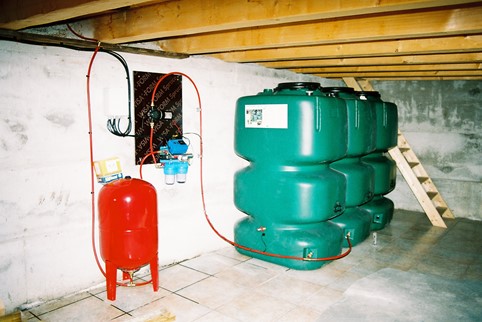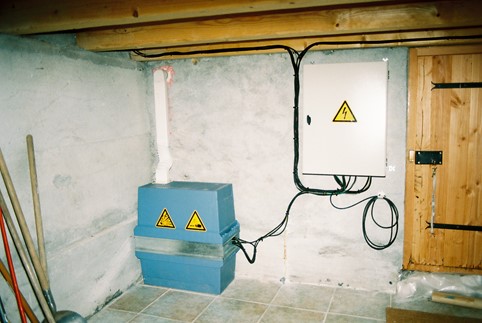How to make a home water self-sufficient in an isolated site
Storing, pumping and making drinking water potable
Water self-sufficiency in an isolated site requires:
- a storage tank which can be buried or above ground and protected from frost.
- a pumping system to send the water into the network at a sufficient pressure,
- if necessary, a water treatment to eliminate suspended matter (cartridge filter) or bacteria, micro algae, viruses (UVc treatment).
Whether it is for the entire installation, or for a separate item, such as the pumping/water treatment system, as part of an installation that is also energy self-sufficient, it is imperative that every detail be carefully studied.
In the latter case, there are three things to consider:
- the consumption of the installation,
- the continuous power (which must be delivered to supply the consumers) and
- the peak power (the maximum power required to start up an equipment).
Optimising the sizing of the water distribution system
The three points mentioned in the previous paragraph will be directly related to the characteristics of the site:
- total lift height (geometric height from water tank to tap)
- distance, diameter and nature of pipes
- volumes of water consumed
- direct consumption or via a storage reserve (membrane booster)
This information will enable the selection of the various water system components.
For electrical consumers this will result in:
a pumping/raising system and/or booster pump(s), circulator(s)
.
- the sewage system
For these reasons, each installation will be different, which is why it is important that a study is carried out to be certain of meeting these requirements, even more so in remote locations and for drinking water, a vital need.
Example and testimonial on an existing installation
Rainwater storage 3000L

Placing the equipment next to the basement storage. Choice made for 3 tanks of 1000L twinned from below to facilitate routing to the basement.
Supply water system shower/sink, cottage 80m², 2 adults
Average consumption 80L/day: dishes, shower, drinks and cooking
The equipment selected:

- 24V 27L/min 300W pump
- Water treatment station UVc treatment with integrated 11W filtration (treats a maximum instantaneous flow rate of 6L/min)
- 40L expansion vessel Some additional data:
- Inrush current: 15A
- Average operating consumption: 250Wh
- Daily operating time: 20 minutes, 4 trips
- UV start-up on timer, 3 minutes before pump trip: 32 minutes
- Consumption/day: 160Wh/D
- Exposure of the photovoltaic collector E/S-E, high Alps
Estimated minimum production: 16Wh/M² for 2 hours
Estimated maximum production: 160Wh/M² for 8 hours
Estimated production depending on exposure, orientation, inclination and masks due to surrounding vegetation.
- Maximum 3 to 5 days of consecutive bad weather
Advised minimum configuration production/storage: 170wc monocrystalline back contact+mppt 10A, 75Ah/24V batteries (minimum), battery status monitor, 24/230V 300W quasi-sine inverter
Equipment cost:
1026, excluding cabling, protections, support and shipping costs.
Conclusion
Making a dwelling self-sufficient in water, especially in an isolated site, is the result of careful consideration. We invite you to get in touch with our partner, Damien ROY, from the site Prop-energy
He is a specialist on the subject and we work together to provide you with quality advice for your projects.
